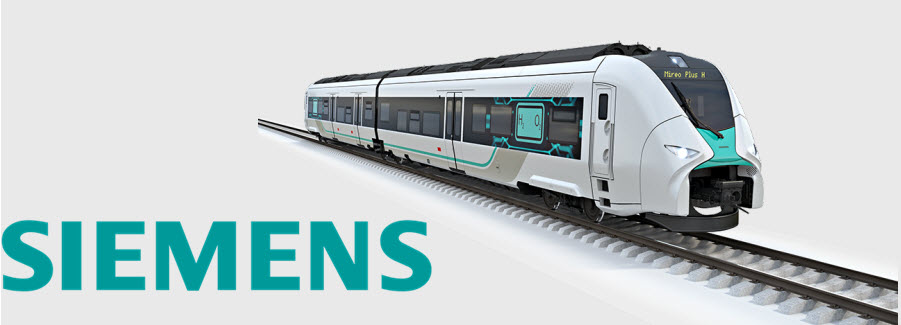
Cost-effectiveness is no longer an argument against sustainability
Even highly developed networks like Germany’s can only justify electrifying about 50 percent of their lines.
But the Mireo Plus offers many alternatives to costly electrification: It simply takes its own motive power along with it, in the form of battery storage systems, innovative fuel cells, and a combination of the two. And because it was designed to be especially energy-efficient, it opens up new opportunities to make rail transport even more sustainable.
The Mireo Plus is designed from the ground up to combine flexibility with range and efficiency. Thanks to its flexible design and its modular, scalable traction system, it covers the entire range of regional and local tasks. And thanks to its rigorously light-weight design, energy-efficient components, and smart on-board grid management, it consumes up to 25 percent less energy than trains with a comparable passenger capacity. Location recognition enables predictive driving, which makes the train capable of identifying demands on performance like greater acceleration, or the energy contribution expected from braking. This set-up also includes auxiliary systems like air-conditioning control to optimize the amount of energy consumed by all on-board systems.
“The future of public transport is electric – with the Mireo Plus even without an overhead line.” Christian Engelmann, Sales Manager SPNV vehicles Germany
The Mireo Plus H – the middle-distance champion
Environmentally friendly hydrogen provides the energy source for the Mireo Plus H. Its low-temperature fuel cells were specially developed for rail applications. As a result, they offer twice the power density and up to four times the service life compared to fuel cell systems designed for the automotive industry or buses. At the same time, a high-performance battery serves as a kind of dynamic power bank to compensate for high dynamic loads (e.g. when starting off), and also to recover braking energy. Thanks to its energy-saving system architecture, a Mireo Plus H needs up to 10 percent less energy than a conventional electric trainset. And with ranges of up to 600 km for the two-car units and up to 1,000 km for the three-car units, the system is able to cover the longest regional lines in Europe.
Hybrid drive systems for commuter and regional trains
While large sections of the railway network aren’t electrified, rail operators are increasingly searching for a replacement for diesel multiple units (DMUs), a trend that will intensify over the coming decades. The reasons are stricter emission regulations (air pollution, noise, and carbon dioxide) and anticipated increases in the price of diesel fuel. Because an increase in renewable power generation is also resulting in fluctuating grid capacities, the focus is shifting to storage-based solutions for power supply.
Consistently better operation – with hydrogen
Hydrogen (H2) is an ideal storage medium for electrical energy because it can easily be carried in tanks and reconverted to electricity (and water) in a hydrogen fuel cell. Siemens offers all the elements in the supply chain for H2 trains from a single source, from wind power plants and electrolyzers that generate hydrogen to depot storage and on-board fuel cell technology.
Fuel cells for long operating ranges
Due to their high power density, Siemens H2 trains typically require one tank stop at the depot per day, especially for ranges over 120 km. Two train lengths are available: two-car units for ranges up to 600 km and three-car units for ranges between 800 and 1,000 km.
Benefits:
- CO2-free operation when using hydrogen from electrolysis
- Low noise level
- State-of-the-art fuel cells with twice the power density and service life → 34,000 operating hours (over three times as many as the market standard)
- +5 percent efficiency level
- Use of excess electricity in the grid with hydrogen as storage medium
- Sustainable technology from a single source, ranging from wind power plants and electrolyzers (H2) to the vehicle, maintenance/service
Source: Siemens
Read the most up to date Fuel Cell and Hydrogen Industry news at FuelCellsWorks




